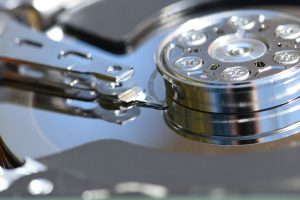Scientists in The Netherlands have created the smallest computer hard drive of all time. And, to add to the sensation, they have figured out a way to store data on atoms. By doing so, they claim, they could hold all of the information from every book in the world, on a device the size of a postage stamp.
The storage device is only 100 nanometers in length and it is capable of storing up to 1 kilobyte of data. The scientists from the Technical University of Delft stated that they had invented a hard drive storage device that had the capacity 500 times more than any current hard drive in existence.
Sander Otte, lead author on the research team, said that they took chlorine atoms and put them on a surface of copper and discovered that they had a perfectly square grid with a hole in the middle of it when an atom was missing. What they were then able to do was maneuver the chlorine atoms with a scanning tunneling microscope and move the atoms over to the hole.
When the hole is underneath the chlorine atom, it creates a one and when the hole is on top, it creates a zero. Thus, the scientists had created a binary code hard drive.
Otte said that, “The combination of the chlorine atoms and the supporting copper crystal surface that we found now, combined with the fact that we manipulate ‘holes’, just as in a sliding puzzle, makes for a much more reliable, reproducible and scalable manipulation technique that can be easily automated. It is as if we have invented the atomic scale printing press.”
This new drive is considered to be the largest atomic structure ever invented and built by humans. The chlorine atoms surround one another and keep themselves all in place except for when they venture to the hole. The alphabet was determined by the position of the holes and the team actually stored some written material on the drive.
While the practical application of the storage device is some time away, Otte remains optimistic. Right now, the drive can only function in clean conditions and in liquid nitrogen temperatures of minus 346 degrees.
PHOTO CREDIT: Pixabay

